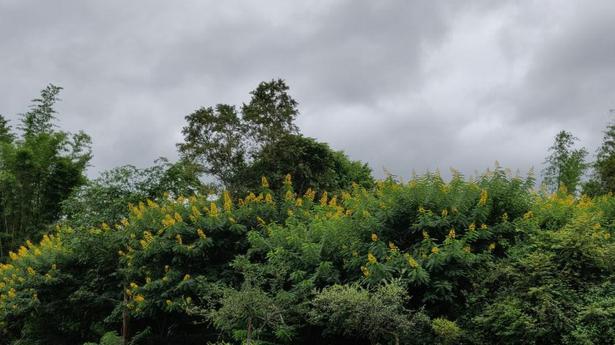
Forest Dept. checks viability of using invasive tree Senna spectabilis for paper-making
The Hindu
COIMBATORE With the removal of invasive tree Seemai Karuvelam (Prosopis juliflora) already begun in
With the removal of invasive tree Seemai Karuvelam ( Prosopis juliflora) already begun in select forest areas, the Forest Department has checked the viability of using one of the exotic species, namely Senna spectabilis, for paper-making.
Tamil Nadu Newsprint and Papers Limit (TNPL) has tested log samples of Senna spectabilis sent by the Anamalai Tiger Reserve (ATR) authorities to check the pulpwood properties of the alien species.
TNPL tested Senna spectabilis logs at its factory laboratory in Karur and found that its pulp density was less than that of the commonly used pulpwood, namely eucalyptus and casuarina. However, according to sources with the TNPL, pulp of the invasive tree could be used along with the pulp of eucalyptus or casuarina for paper-making.
TNPL requires 10 lakh tonnes of pulpwood per annum for paper-making and it is sourcing 90 % of the raw material from farmers, who cultivate eucalyptus and casuarina. It has tie-ups with farmers who cultivate the popular pulpwood on contract basis, said sources, adding that it would consider using the invasive plant for paper-making, if the Forest Department made them available at an affordable rate.
ATR Field Director S. Ramasubramanian, who took the step to check the paper pulp properties of Senna spectabilis, said that the effort was to convert the invasive species into other products after eradicating them from forests.
Prosopis juliflora and Lantana camara are the two most widely spread invasive plants in ATR with Senna spectabilis in third place. However, Senna spectabilis have grown into huge trees in the tiger reserve, affecting the growth of native plants and trees. The tree with yellow flowers has the highest density in the Pollachi forest range of ATR.’
“At present, we are removing Prosopis juliflora with priority. As Senna spectabilis trees are in big sizes, more manpower and machinery is required for their removal,” said M.G. Ganesan, Deputy Director of ATR, Pollachi Division.













